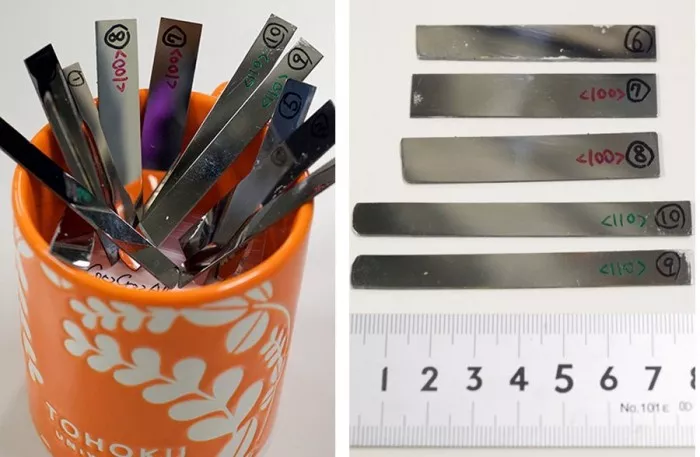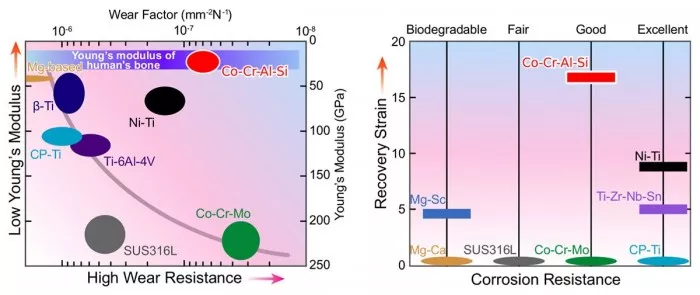Scientists have made a major breakthrough in testing the composition of metal alloys used in medical implants, producing a biomaterial with the highest elasticity and wear resistance The team's new hyperelastic alloy overcomes some key safety problems and provides the strain recovery and durability required for long-term use in the human body.

This new metal alloy is a masterpiece of scientists from Tohoku University in Japan. They set out to solve some key problems of biomaterials currently used in medical implants. These materials may be used as part of hip or knee replacement, although metal materials currently used are harder than bone, which may lead to bone atrophy or loss of density. At the same time, more flexible materials tend to lose their wear resistance over time.
The existing hyperelastic metal alloys are usually used for stents and orthodontic wires, showing the prospect of walking between durability and flexibility. However, they contain nickel and are at risk of allergic reaction. Scientists have been unable to produce a nickel free version to provide the same hyperelasticity, so the authors of the new study began to work to find a solution.
This involves attention to the so-called Young's modulus, which is a standard to measure how easy a material can stretch and deform, and is determined by its crystal structure. The young's modulus of flexible materials is low, while that of rigid materials is high. The team tried to narrow the young's modulus gap between human bones and metals used in medical implants.

Xiao Xu, the corresponding author of the study, said: "since the young's modulus depends on the crystal orientation, we have grown single crystals with specific crystal orientation."
These experiments led to the birth of a new type of flexible and tough hyperelastic alloy based on chromium. Its strain recovery rate was twice that of commercial NiTi alloy, reaching 17%. At the same time, the young's modulus is very low, and the alloy has the flexibility similar to human bones.
Xu said, "we know that chromium has strong corrosion resistance, but we are surprised by the super elasticity, flexibility and remarkable wear resistance of cobalt chromium based materials."
Scientists are now trying to better understand why their alloys, known as co CR Al Si (CCAs), exhibit such excellent properties and hope to further improve them. However, in its current form, scientists have concluded that this new biomaterial is a promising candidate for biomedical applications.
The study was published in advanced materials 》In magazines.